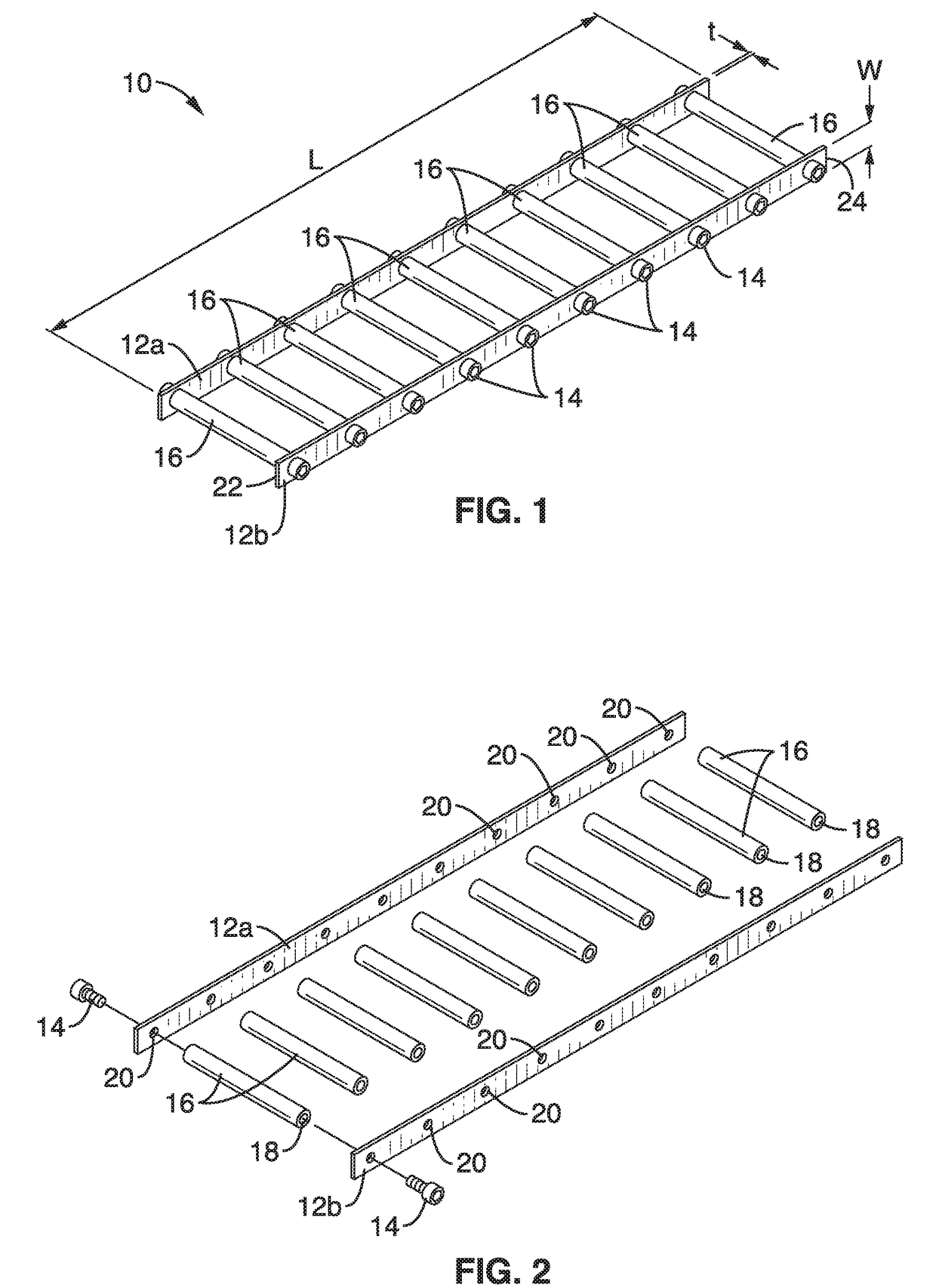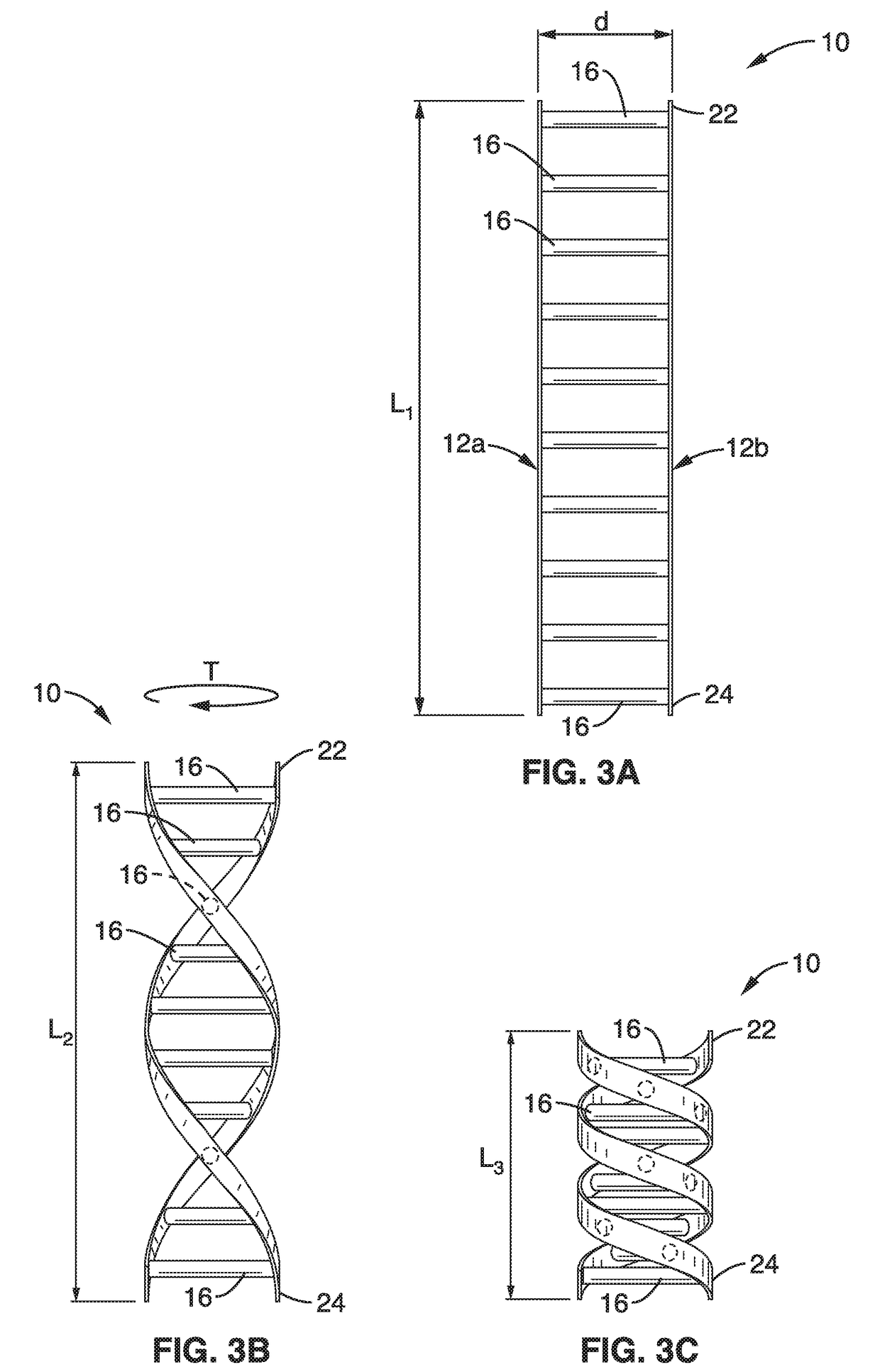DNA structured linear actuator
a linear actuator and dna technology, applied in the field of linear actuators, can solve the problems of non-linear response in length change and torque, limited change in limited change in the overall length of the actuator, so as to increase the gear ratio, reduce the overall length of the structure, and be lightweight.
- Summary
- Abstract
- Description
- Claims
- Application Information
AI Technical Summary
Benefits of technology
Problems solved by technology
Method used
Image
Examples
Embodiment Construction
[0022]FIG. 1 shows a schematic perspective view of the DNA-structured linear actuator 10 of the present description. FIG. 2 is an exploded assembly view of the DNA-structured linear actuator 10. The linear actuator 10 comprises a ladder-like structure that when twisted along its length resembles a strand of DNA. The actuator 10 comprises a pair of elongate, flexible planar rails (12a, 12b) that are spaced apart by distance d via a plurality of cylindrical rungs 16.
[0023]The rungs 16 are attached to the rails 12a, 12b via a plurality of fasteners 14 at spaced-apart locations on the rails 12a, 12b. Each of the rungs 16 has a first end coupled to the first rail 12a and a second end coupled to the second rail 12b such that the first and second rails 12a, 12b are spaced apart parallel to each other to form a ladder-like structure having a first rail end 22 and a second rail end 24 with a rail length L established at points between rail ends 22, 24. The rails 12a, 12b shown in FIG. 1 and ...
PUM
 Login to View More
Login to View More Abstract
Description
Claims
Application Information
 Login to View More
Login to View More - R&D
- Intellectual Property
- Life Sciences
- Materials
- Tech Scout
- Unparalleled Data Quality
- Higher Quality Content
- 60% Fewer Hallucinations
Browse by: Latest US Patents, China's latest patents, Technical Efficacy Thesaurus, Application Domain, Technology Topic, Popular Technical Reports.
© 2025 PatSnap. All rights reserved.Legal|Privacy policy|Modern Slavery Act Transparency Statement|Sitemap|About US| Contact US: help@patsnap.com



